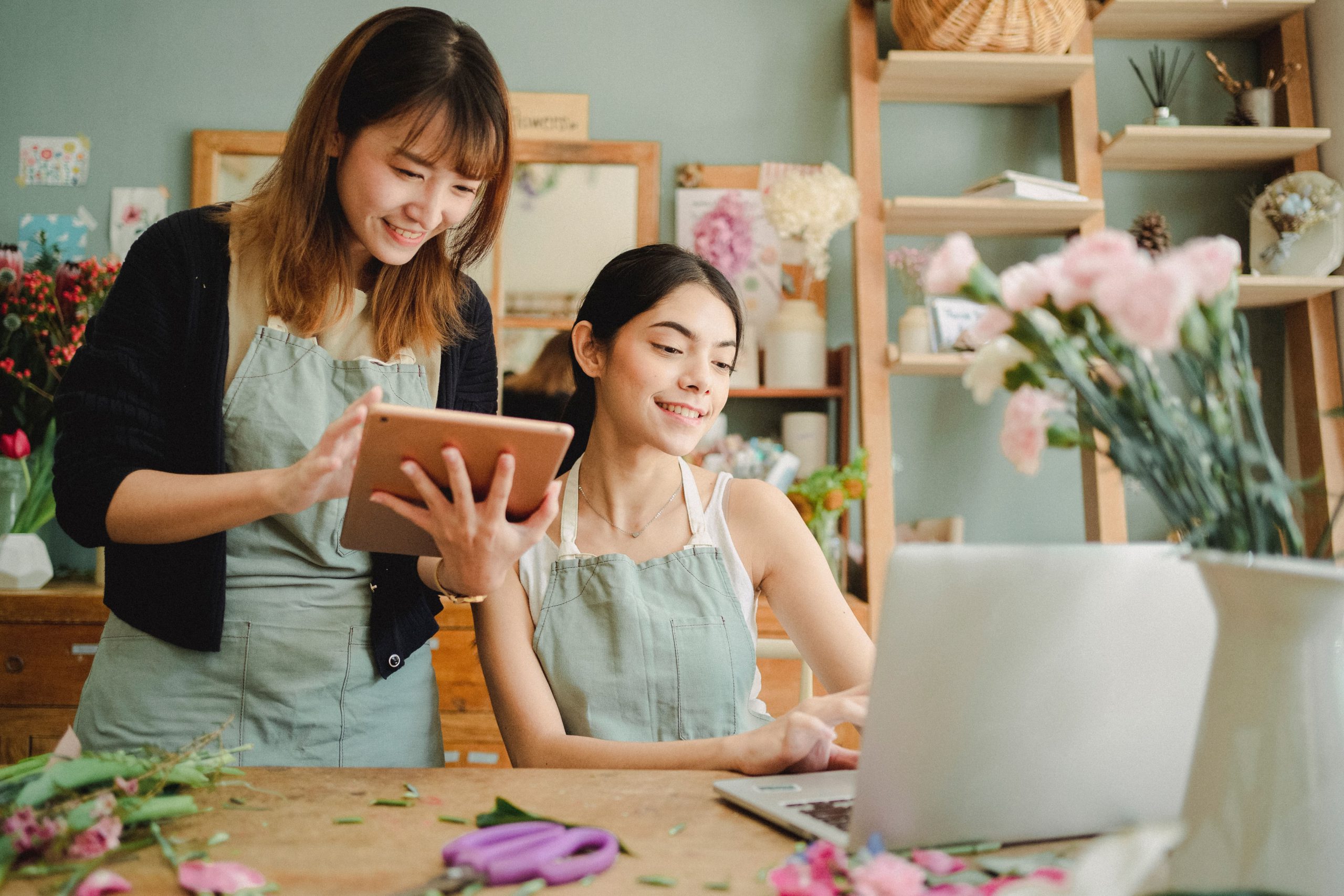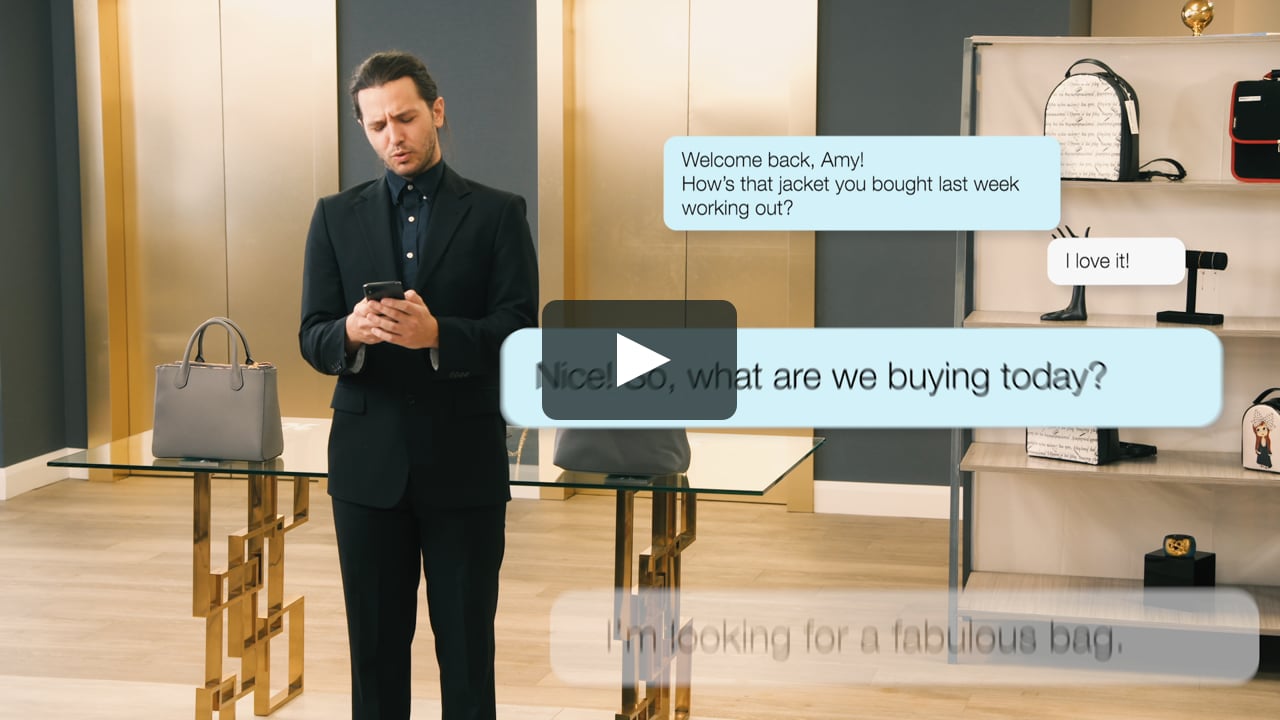With the global pandemic having an unprecedented effect on the retail sector, innovative technology companies are rapidly inventing platforms and systems to help shuttered businesses continue operating.
Although individual state and country reopening phases vary on a case-by-case basis, there’s no doubt that the world’s shopping habits will change dramatically. A large chunk of consumers will have to stay home, particularly those in high-risk categories, meaning that several industries’ target demographics will face a huge loss in foot traffic.
It’s a crucial time to pivot and focus on e-commerce, although too often, websites are the equivalent of a digital catalog. Retail leaders are leveraging emerging technology and digital tools that will offer their customers a more interactive, personalized shopping experience.
Powerfront – a tech company that’s invented and perfected an AI-powered chat solution for luxury brands – is the first to launch a product that enables a salesperson working either remotely from home, or in-store, to make a video call to their online customer to demonstrate products and create a shopping basket for the customer to enable a seamless checkout, all while the online customer shops safely and comfortably from home.
In-store and remote sales advisors alike can use Powerfront’s INSIDE Store app to chat to customers, send personalized chat links to VIP customers offering a preview of new arrivals, or even go LIVE and stream a virtual trunk show, demo class, or collection preview to hundreds of website visitors at once. Using INSIDE’s smart data, brands can target users based on their past purchases, browsing history, or VIP status to invite them to either a one-to-many or one-on-one video shopping experience.
This technology will be useful to dozens of verticals, and we’ll continue to see brands adapt this type of technology. Here are six that will especially soar with the assistance of video shopping.
Grocery:
Grocery delivery platforms have seen an astronomical increase in demand. Instacart is on track to process more than $35 billion dollars this year. These platforms are struggling to adapt and rely on a contracted workforce who are often inundated with aggregate orders, while fielding text messages from multiple customers simultaneously, while they struggle to find the correct items in stores, while attempting to maintain some semblance of personal safety! As stores face shortages of essential items, the harried workers often are forced to make quick decisions about how best to substitute the requested items. Subsequently, these platforms particularly have one of the worst reputations for ease of use and spend hours processing customer service issues. These issues could be mitigated easily with the assistance of video, allowing shoppers to offer a one-way video call to seamlessly and easily ensure that they meet the customer’s expectations, before delivery is completed.
Beauty:
As an industry that relies heavily upon trying before buying, beauty companies have to get especially creative in offering inventive solutions for their online customers, allowing them to virtually see and feel the products they’re interested in. As a result, industry leaders like Sephora and Ulta are actually seeing dramatic year-over-year increases in sales growth. At a time where people are staying home and prioritizing their mental health, investing in skincare and cosmetics is a way to maintain a sense of wellness and self-confidence that’s affordable and accessible. These brands are now offering virtual consultations to help customers find cosmetics that match their color palettes; teach customers how to use products; and even prepare them for their special day.
Kathryn was so wonderful and so helpful, I really appreciate this service so much! Due to COVID, I have to change my bridal makeup plans completely and I have been stressing out about it. So happy that she was able to show me how to do a wedding eyeshadow look step by step. She was also able to teach me how to apply contour, blush and highlight to my face as well. and give me a sense of ease with what products to use and how to apply everything correctly in time for the big day. I am so grateful!
-One happy customer of an international makeup brand using INSIDE Store app
Music:
Many people are using their newfound downtime to dig into new hobbies or hone their skills. Musical instrument sales are surging, with Guitar Center reporting their sales more than doubling after shelter-in-place orders were announced, and Sweetwater Music seeing orders exceeding that of the holiday seasons. Buying an instrument as a novice may come down to price, clout, or look, but generally more seasoned musicians want to see, feel, and touch the instrument before they bring it home. When scale, tone, and size are an issue, a video solution can help proprietors showcase an instrument’s range and depth before sending it off to its new home. Solutions like INSIDE also allow customers to find a specialist or instructor in their preferred instrument and schedule a lesson with them so they can get to know the ins and outs of the instrument and cultivate their new hobby.
Automotive:
With unemployment and income loss on the rise, as well as working from home becoming the norm, you might think automotive sales would be plummeting. And for the first month of the crisis in the US, they were. But as businesses reopen and employees return to their places of work, they’re opting to travel via car instead of public transportation to reduce exposure to COVID-19. That means many city-dwellers who relied on public transportation are looking for personal vehicles for the first time. Cars.com reports a massive uptick in unique visitors who are potential first-time car owners. Reading reviews, consumer reports, and YouTube videos only go so far when new car buyers are in the market and in the research phase of the shopping journey. Car dealerships are using technology to give potential buyers a virtual test drive of vehicles they’re interested in.
Fashion:
Even if fashionistas aren’t able to try on the latest styles, virtual shopping solutions can help them check out hardware, colors, patterns, textures, and other details crucial to the buying process. Fashion sales have dipped (research firm Bain & Company reports luxury brands saw a 25% dip in the first quarter of 2020), but there’s hope. As businesses reopen, some analysts project that consumers will enthusiastically resume their normal shopping habits; additionally, consumers will have to change out of their sweatpants and shop for new wardrobes. More than any other, the fashion industry is moving fast on providing digital offerings to integrate the on- and offline shopping experience. Fashion brands are adapting virtual showrooms, livestream video shopping, AR try-on, and blockchain technology for purchasing. Some luxury brands like Gucci are arming their in-store staff with customer engagement software on their mobile phones in order to clientele in real time, virtually. In-store staff can send emails or texts with dynamic links to customers inviting them to chat or have a video call directly, or schedule a time to chat with their preferred sales advisor. Sales associates can walk customers through products in detail and demonstrate features, visualize true colors, and showcase new products; and then add the items to their online shopping basket in order to complete the purchase, replicating that in-store experience for their customer, virtually.
Real Estate:
Virtual tours have been possible for a long time, but in this day and age, those in the market for real estate may not be able to travel to view properties, or may not feel comfortable entering a small space with an agent. A video-assisted real estate agent can tailor virtual tours to a clients’ specific wants and needs, as well as develop a rapport with a potential client, therefore understanding their concerns and desires so they can help them find a perfect new home or commercial space.

Since the future of retail is anyone’s best guess, there’s only one certainty – it’ll take a long time for in-person shopping to go back to “normal.” These digital tools are here to stay, as the pattern of consumer behavior will likely be altered permanently. Pre-pandemic, the “retail apocalypse” was a real threat to brick-and-mortar stores. The ability to shift to digital channels is imperative for brands to stay in business.


